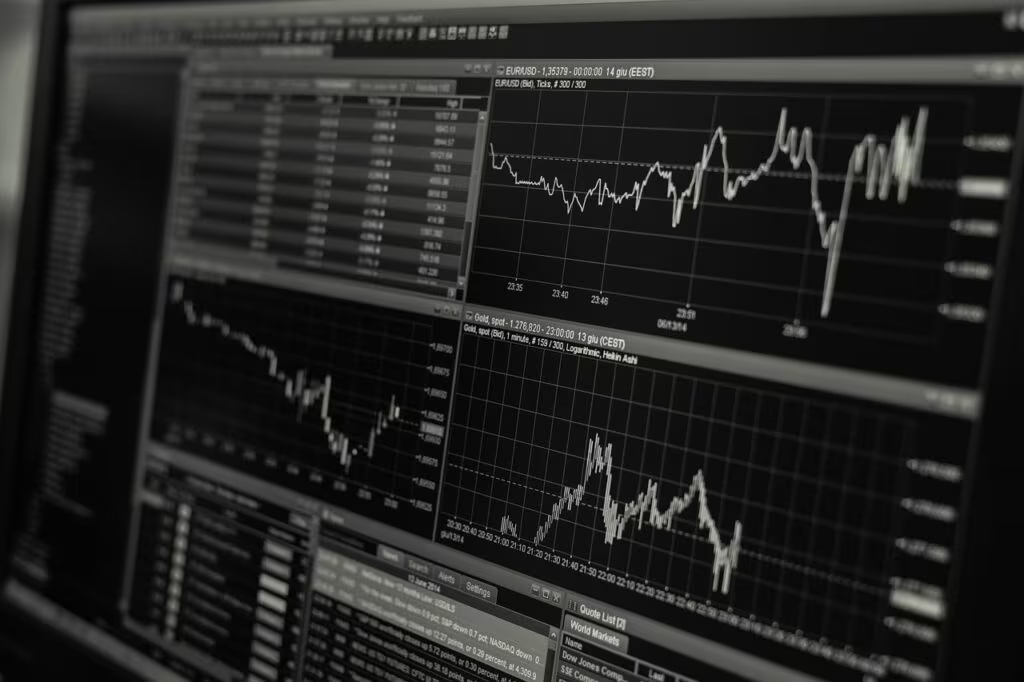The Illusion of Prosperity: Why the S&P 500 Doesn’t Tell the Whole Story
On the surface, 2025 appears to be a banner year for U.S. equities. The benchmark S&P 500 index has delivered impressive returns, successfully navigating and recovering from a volatile tariff-induced springtime slump that briefly rattled global markets earlier this year. However, a deep dive into the index’s composition reveals a critical and potentially troubling trend: the market’s spectacular gains are being driven by an unprecedented concentration of wealth and performance in a handful of AI-forward power players.
For investors and policymakers alike, the headline S&P 500 number is creating an illusion of broad economic health, masking underlying stagnation and weakness across the vast majority of the American corporate landscape. The divergence between the index’s performance and the reality of the average stock has rarely been this stark.
The Anatomy of a Concentrated Rally
The S&P 500 is a market capitalization-weighted index. This means that companies with larger market values—such as those in the technology sector—have a disproportionately large influence on the index’s movement. When a company like Nvidia or Microsoft sees its valuation soar by hundreds of billions of dollars, it can lift the entire index significantly, even if the other 490-plus companies are flat or declining.
This concentration effect has reached historic levels in 2025, primarily fueled by the accelerating investment cycle in artificial intelligence (AI) infrastructure. The companies supplying the chips, cloud computing power, and software necessary for this revolution are experiencing spectacular gains, creating a highly skewed market.
The Dominance of the AI Infrastructure Giants
The recovery from the springtime trade tensions was almost entirely engineered by this small group of mega-cap technology firms. Their resilience and continued growth forecasts, tied directly to the seemingly insatiable demand for AI processing power, have made them safe havens for capital seeking growth in an otherwise uncertain macroeconomic environment.
Key characteristics of this concentrated rally include:
- Market Weighting: The top five or seven companies now account for a percentage of the S&P 500’s total market capitalization that rivals the peak of the dot-com bubble in the year 2000.
- Performance Gap: The performance difference between the top 10 stocks and the remaining 490 stocks is vast, suggesting that the benefits of technological advancement are not translating into broad corporate profitability.
- Sector Skew: While the S&P 500 is designed to represent the entire U.S. economy, its recent performance is overwhelmingly dictated by the Information Technology and Communication Services sectors.

The Nvidia Effect: A Case Study in Index Distortion
No company better illustrates this phenomenon than Nvidia. As the dominant supplier of specialized graphics processing units (GPUs) essential for training and running large language models (LLMs), Nvidia’s stock price has surged dramatically throughout 2025. These gains, referred to by analysts as the “Nvidia Effect,” contribute a massive, outsized portion of the S&P 500’s total return.
When a single stock, or a handful of stocks, contributes a double-digit percentage of the entire index’s return, the index ceases to be a reliable barometer of the overall economy. It becomes, instead, a barometer of the AI boom itself.
“The market’s reliance on a narrow cohort of AI leaders creates systemic risk. While their growth is undeniable, the lack of participation from cyclical and value sectors suggests that the underlying economic engine—Main Street—is sputtering, not accelerating,” noted one prominent market strategist earlier this year.
Quantifying the Divergence
To truly understand what the S&P 500 is hiding, financial experts often look at the S&P 500 Equal Weight Index (EWI). Unlike the standard S&P 500, the EWI assigns the same weight to all 500 companies, regardless of their market capitalization. This index provides a much clearer picture of the performance of the average U.S. company.
If the standard S&P 500 is up 15% year-to-date, and the Equal Weight Index is only up 3%, this 12-point gap demonstrates that the vast majority of companies are struggling to achieve meaningful growth. This gap is a crucial indicator of market breadth—or the lack thereof.
| Index Metric | Standard S&P 500 (Cap-Weighted) | S&P 500 Equal Weight Index (EWI) |
|---|---|---|
| Representation | Heavily skewed by largest companies | Each of the 500 companies weighted equally |
| 2025 YTD Performance (Hypothetical) | Strong Double-Digit Gains (e.g., +15%) | Modest Single-Digit Gains (e.g., +3%) |
| Economic Signal | Strong Market/Strong Tech | Weak Market/Stagnant Economy |

Economic Implications Beyond the Index
This market concentration has profound implications for the real economy, going far beyond portfolio returns. The performance divergence suggests several key macroeconomic trends:
1. Capital Allocation Distortion
When investors pour capital almost exclusively into a few mega-cap tech stocks, it starves smaller, mid-cap, and cyclical companies of necessary investment. These smaller firms often represent the core drivers of employment and local economic activity. The lack of investment breadth indicates skepticism about the broader economic outlook, particularly in sectors sensitive to interest rates, consumer spending, and manufacturing.
2. Uneven Productivity Gains
The AI revolution promises massive productivity gains, but those benefits are currently accruing almost entirely to the companies developing and deploying the technology. While the tech giants are seeing exponential efficiency improvements, traditional industries—manufacturing, retail, and energy—are struggling to integrate these technologies or are facing competitive pressure without the corresponding valuation boost.
3. Risk of Sudden Reversal
Extreme market concentration increases systemic risk. If regulatory scrutiny intensifies, or if the AI investment cycle slows down even marginally, the impact on the S&P 500 would be severe. The index is highly vulnerable to idiosyncratic risks affecting just a handful of stocks. A sudden correction in one or two of the largest components could trigger a broader market drawdown, regardless of the performance of the other 498 companies.

Key Takeaways for Investors and the Public
Understanding the concentrated nature of the 2025 rally is essential for making informed financial decisions and accurately assessing the nation’s economic health. The S&P 500 is not a perfect proxy for the U.S. economy; it is increasingly a proxy for the success of the AI infrastructure buildout.
Here are the essential points to consider:
- Index Interpretation: Do not rely solely on the headline S&P 500 number. Always check market breadth indicators, such as the performance of the Equal Weight Index or the percentage of stocks trading above their 200-day moving average.
- Risk Assessment: Recognize that high concentration means higher risk. Diversification outside of the top five mega-caps is crucial for mitigating potential volatility if the AI trade reverses.
- Economic Reality: The market’s strength does not necessarily translate to a strong job market, robust consumer spending, or widespread corporate profitability outside of the technology ecosystem.
- The Tariff Context: The rapid recovery from the springtime tariff slump highlights the market’s current focus on technological growth over geopolitical stability, prioritizing long-term AI potential above near-term trade friction.
Conclusion: Looking Beyond the Tech Bubble
The performance of the S&P 500 in 2025 is a powerful testament to the transformative potential of artificial intelligence and the financial might of the companies leading that charge, particularly Nvidia. However, it is simultaneously a warning sign about the health of the broader economy. The index is effectively hiding the fact that the vast majority of U.S. corporations are struggling to generate significant shareholder returns.
For the market rally to become sustainable and truly reflective of widespread economic strength, the performance needs to broaden. Until capital flows back into cyclical industries, small-cap stocks, and value sectors, the S&P 500 will remain a highly concentrated, and potentially precarious, measure of American corporate success.
Original author: Aaron Gregg, Federica Cocco
Originally published: November 24, 2025
Editorial note: Our team reviewed and enhanced this coverage with AI-assisted tools and human editing to add helpful context while preserving verified facts and quotations from the original source.
We encourage you to consult the publisher above for the complete report and to reach out if you spot inaccuracies or compliance concerns.

